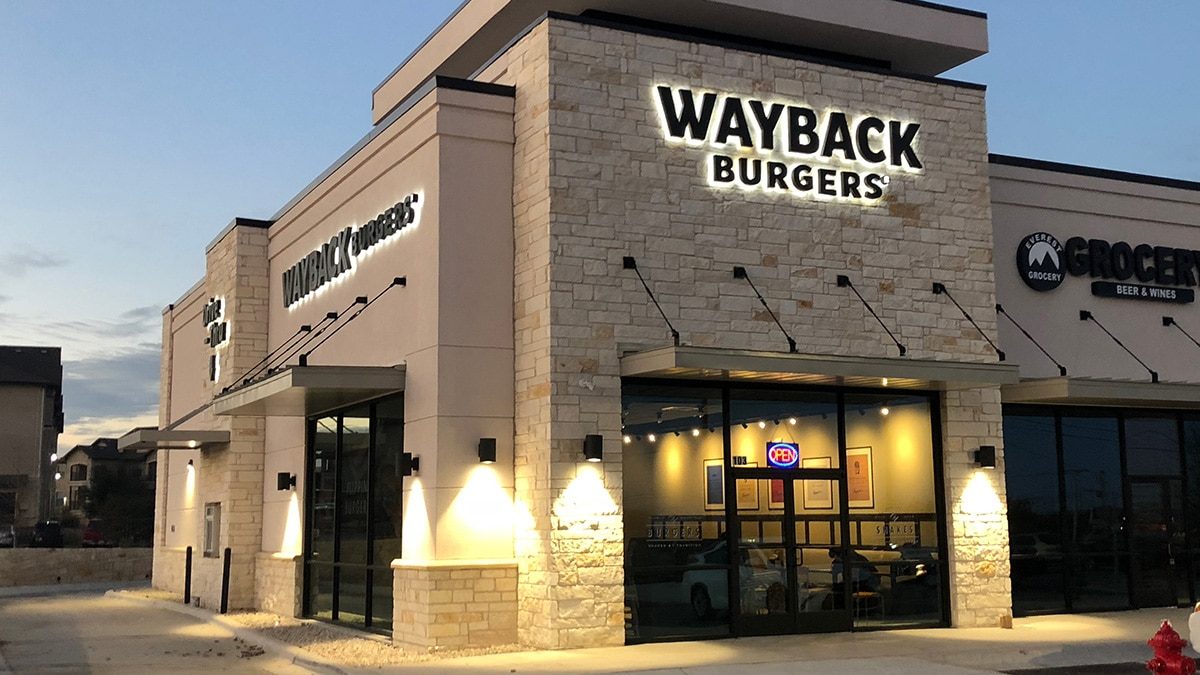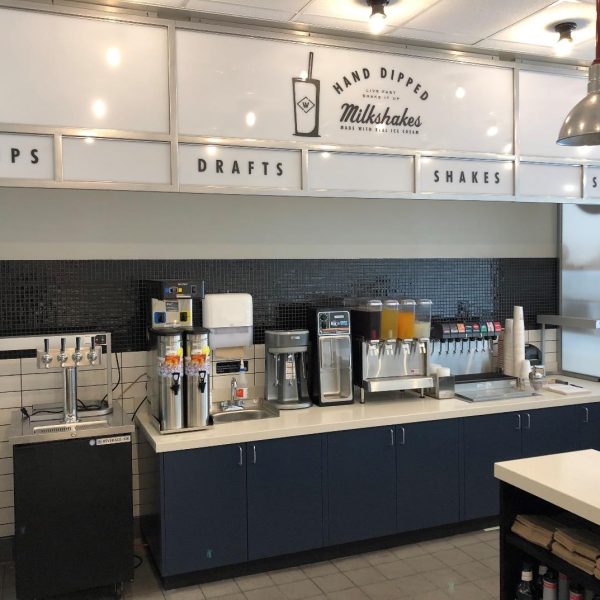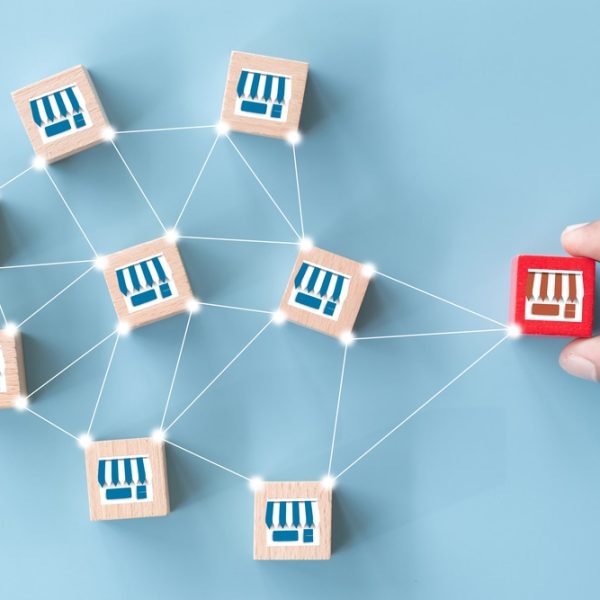 Business is booming between the buns.
Business is booming between the buns.
Eighty-five percent of customers love or like burgers, according to foodservice industry research firm Datassential, QSR Magazine reports. And, get this: this recent research also found that burgers outrank 99 percent of the thousands of other foods in the firm’s FLAVOR database. It is no wonder, then, that over the last several decades, the restaurant world has birthed a seemingly limitless cavalcade of brands and offerings. And for some time now, certain brands have sought to stand out from the crowd by making a “better burger.” It’s a trajectory that makes a burger restaurant more competitive not only against lower-quality burger places but also casual dining restaurants with better-quality fare.
This trend continues in earnest, making it more challenging to create a signature identity. But the good news for the consumer is heightened variety, with everything from blended patties to higher quality plant-based burgers to exotic varieties of toppings and flavor profiles. Today’s dining public is open-minded and hungry for variations. And that means major opportunity for creative burger purveyors who can offer something exciting and different.
First-time entrepreneurs with a sizzling vision for quality burgers may have the food pictured in their minds, but the learning curve to making it happen, as a moneymaking burger business, can be steep. In addition to the patties and buns, there are plenty of nuts and bolts, so to speak. Let’s take a look at how to turn burger business building dreams into reality.
What Are My Options?
Deciding on the type of concept for a burger business may start with two threshold factors: (1) an entrepreneur’s available budget/capital and (2) a determination of what unique twist on burgers the market in question needs. A third important factor is whether the entrepreneur wants to create a new concept out of thin air or open a franchise location with an existing brand.
The options available most likely will range from fast food burger joints to fast-casual — or maybe even a food truck. If you decide to go with a franchise, rather than attempt to go it on your own, both fast food and fast-casual categories include a wide range of franchises at initial investment costs from relatively inexpensive to pretty pricey.
The business model will be important in setting the establishment apart in the market. Study the landscape of competition in the area and what they offer—and what they don’t. Perhaps fast food chains are everywhere, but higher quality, more creative options may be harder to find. That presents a window of opportunity. A thriving burger business succeeds with not only a fresh-to-market brand but a fresh product, which is of crucial importance in establishing a real point of difference.
If you open a franchise location of an existing chain, you’ll get a ton of assistance in site selection, construction or lease guidance, and more. But if you go it on your own as an independent, you’ll have several decisions to make, such as determining the best location. If you’re in a bad location, you may be cooking your burgers in a vacuum.
A food truck could be a viable choice if you want to move from one spot to another and compare — and combine — success in a variety of locations. The initial investment is less, though licensing can be very tricky, depending on the municipality, and ordinances may vary from spot to spot within the same town as you truck around. And if you develop loyal customers, they may have to figure out where you are from day to day.
If you do elect to open a brick-and-mortar business, you’ll have to decide whether to lease or purchase. Obviously, less investment on the front end is necessary for a lease, as opposed to buying, but leasing may be more restrictive as to how extensively you’re allowed to modify to the building. If you lease a space that was another restaurant previously, you may not have to modify it as much as you would if converting from a different business format.
When you’re a first-time burger restaurant operator, you may get up and rolling and hone your operating system to a science, only to realize another location would be more beneficial and give you more traffic. This is when leasing could be advantageous. If you’ve signed a short-term lease of five to ten years, you could have the option to move to a shiny new location sooner rather than later. This is especially favorable when the real estate market lulls; if you own the building, you may be stuck there a lot longer than you’d like.
If you are an independent operator finding your way on your own, make sure you work with a trustworthy commercial real estate broker. If you open a location of a franchised brand, you will be able to take advantage of the company’s relationships with brokers who are familiar with the particular business model and can better find just the right property for your needs.
What Type of Equipment, Space, and Other Stuff Do I Need to Get Started?
It’s a big advantage to have a focused culinary theme such as burgers; because the operator can produce most menu items using a relatively small arsenal of versatile equipment. In the June 2019 issue of Restaurant Startup & Growth magazine, commercial kitchen expert Stephani Robson, a senior lecturer in the School of Hotel Administration at Cornell University, describes a pizza restaurant she visited, which is a great analogy for burger operators. The pizza business would finish most of its menu items — including chicken breasts and much more — in its pizza oven. This versatility saved space in the kitchen and equipment costs.
Whether your burger business uses a char-broiler or griddle (whether gas-powered or electric) for its patties, chances are you’ll be using that same cooking surface for a number of other menu items. Other equipment you’ll likely need, KaTom Restaurant Supply advises, may include commercial refrigeration and freezers, a commercial dishwasher, a vegetable slicer, a French fry cutter, a commercial fryer, a hamburger press, and more. And depending on your business model, you may need furniture for guest dining as well as soda machines and front-of-house equipment for presentation of napkins, condiments, etc.
Space is something to think about during the site selection phase; when you are choosing your venue. In her advice in Restaurant Startup & Growth, Robson shares a rule of thumb: the back of the house in a table-service, non-fine-dining concept should not consume more than a third of the total restaurant space. The kitchen could take up more of the total space if the chosen concept is heavily drive-through-centric, with less need for in-store dining.
Should I Open a Franchise Location or an Independent Burger Business?
If you decide to open a franchise location instead of an independent concept, the cost of entry may be quite low or very high, depending on the chain brand with which you opt to partner. The Franchise Disclosure Document (FDD) enables you to evaluate any franchise, with a breakdown and range of the initial investment costs under Item 7. According to the 2019 Entrepreneur list, the initial investment amounts for the top five restaurant franchises range from $229,000 to $4.7 million, making the average initial investment for a single unit around $2.5 million.
But there is an ever-growing number of better-burger brands out there that cost a lot less upfront than the biggest franchise chains do. For example, fast-casual chain Wayback Burgers — whose menu attracts guests with several delectable cooked-to-order specialty burgers, sandwiches, chicken, hot dogs, hand-dipped shakes, and more — looks for franchise candidates with at least $100,000 in liquid capital. The company grew tremendously in 2018 and keeps expanding, as QSR Magazine reported.
Going independent and becoming a franchisee each have pros and cons. If you start a business yourself, you call all the shots — but those calls may not come from a strong foundation of wisdom, market insight, and support. Especially if you don’t have a background in restaurant ownership or management, you’ll make honest mistakes along the way. You will have learned a lot, but at a cost, with a steeper learning curve.
And while you may believe you have some idea who your biggest competitors will be, a franchise brand has methods to strategically determine their biggest competitors.
A franchise relationship with an existing brand enables you to capitalize on growth trends and get running more quickly and smoothly. And this ties in directly with another question:
How Can My Burger Business Stand Apart From Others?
Let’s circle back to the type of food and service you decide to go with. As mentioned earlier, most burger business concepts are fast food or fast-casual. The latter is a balance of the traits of quick-serve restaurants (QSR or “fast food”) and full-service casual dining. This type of restaurant combines the convenience of fast food with an elevated atmosphere and typically higher quality ingredients. Fast-casual concepts are leading growth in the restaurant industry, according to industry research firm Technomic, as reported by Restaurant Business. In fact, fast-casual is the only restaurant segment to grow traffic in the past five years, per QSR Magazine. Especially if you are a millennial entrepreneur, a fast casual-franchise may be a good fit.
And what better way to stand out than to introduce your area to a new fast-casual brand that is a break from the norm? Continual creativity will keep a burger restaurant relevant to customers, giving them reasons to keep coming back. Not just for familiar menu favorites but for special limited-time-offer (LTO) items and on-trend burger variations. In recent years, burgers have been one heck of a culinary canvas, with no artistic limits, drawing from culinary trends and flavor profiles outside of what one used to think of as a simple cheeseburger.
Wayback Burgers’ had a bona fide hamburger hit with an LTO in early 2019. The Cajun-themed Big Easy Burger was topped with a remoulade sauce, bacon, and cheese. And later this year, Wayback Burgers will introduce a German-inspired pretzel bun. The chain also realizes the importance of trends such as offering the freedom of customization — a big demand of today’s consumers — and quality plant-based options. The Wayback Burgers Veggie Burger combines both those trends, allowing guests to start with a Gardenburger patty (made with natural vegetables and grains) and customize it to their liking. The same option is available for beef burgers and chicken sandwiches.
Little differences add up to big motivation for people to take their business to unique burger restaurants. Wayback Burgers is deft at creating innovative, enticing tweaks on familiar concepts and, for example, even has its own special condiment, Wayback Gold sauce — a blend of barbecue sauce and mustard — for dipping chicken tenders, beer-battered onion rings, house-made chips, French fries, and more.
But standing out is about more than the flavors of the menu; it requires ongoing innovation. Wayback Burgers has introduced a special delivery vehicle with on-site cooking capabilities for a uniquely fresh delivered product. And the brand’s app allows customers to purchase cooked-to-order burgers and other items — and monitor rewards points and more — much more conveniently.
Certainly, a 100 percent new, independent burger business stands a good chance of standing out from the pack, but opening a location of a fast-rising chain such as Wayback Burgers — which has already honed points of difference in the burger world and continues to evolve, based on research and experience — puts the franchisee on a powerful path to success. This is especially so when the concept’s offering is new to consumers in your market but already crafted into an attractive brand package, backed by marketing and promotional programs.
If you are a first-time business owner looking for guidance, systems, and support, or a seasoned entrepreneur looking for your next investment opportunity, check out Wayback Burgers.
About Wayback Burgers
Founded in 1991 in Newark, Delaware, Wayback Burgers is a Connecticut-based fast-casual franchise with a reputation for cooked to order burgers and thick, hand-dipped milkshakes, served in an environment that hearkens back to a simpler place and time — when customer service meant something and everyone felt the warmth of the community.
The burger franchise brand offers qualified candidates the opportunity to open and operate a business in the highly sought-after fast-casual sector with a small footprint and a big upside. Wayback Burgers currently operates in 30 states with over 166 locations nationally and internationally in Argentina, Brunei, Sudan, Saudi Arabia, Canada, and Malaysia. Wayback offers initial training and ongoing support for all its franchisees and works diligently on finding innovative ways to offer franchisees the opportunity to increase revenue while adding value to the customer experience. For more information on how to get started, visit https://waybackburgers.com/franchising/.




